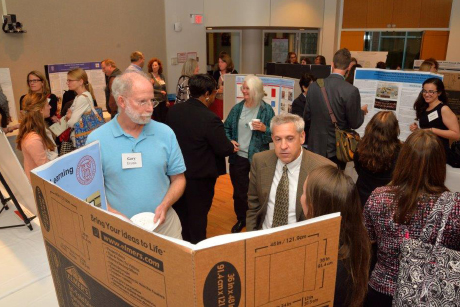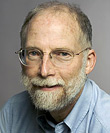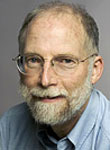 Would rewards or penalties work better for encouraging people to buy healthy food? Will involving a person's family or faith-based social network improve an obesity intervention? How can state-of-the-art technologies be leveraged to measure people's exposure to stressors reliably and effectively, to help researchers study the links between stress exposure and health outcomes?
Would rewards or penalties work better for encouraging people to buy healthy food? Will involving a person's family or faith-based social network improve an obesity intervention? How can state-of-the-art technologies be leveraged to measure people's exposure to stressors reliably and effectively, to help researchers study the links between stress exposure and health outcomes?
These are but a few of the questions that is tackling with her colleagues. She is playing a central role in three new prestigious grants which bring together accomplished interdisciplinary teams of scientists from economics, psychology, sociology, nutrition, marketing, epidemiology, and statistics. Wethington is a medical sociologist who is an Associate Professor in the Departments of Human Development and of Sociology. She is an expert in the study of stress and health and in translational research methods. Her major research interests are in the areas of stress and the protective mechanisms of social networks. She is co-director of the new Translational Research Institute on Pain in Later Life (funded by the National Institute on Aging and directed by Dr. Cary Reid of the Weill Division of Geriatrics), as well as the director of its Pilot Studies program.
A five-year, $6 million dollar grant will fund the Cornell Center for Behavioral Intervention Development to Prevent Obesity, a collaboration between Cornell University in Ithaca and the Weill Cornell Medical College. The goal of the new Center will be to translate basic behavioral and social science discoveries into effective behavioral interventions that reduce obesity and obesity related diseases in Black and Latino communities. The team will focus on behavior changes, not dieting - testing personalized strategies aimed at reducing weight and increasing physical activity in a way people can maintain over time.
In this project, Wethington will contribute her expertise to developing and designing the interventions, analyzing the results of participant interviews, and examining the impact of stressor exposure on the success of interventions. Dr. Mary Charlson, professor of integrative medicine at Weill leads the project. Other team members include Carol Devine, Division of Nutritional Sciences; Brian Wansink, Department of Applied Economics and Management; Martin Wells, Statistical Sciences; and Drs. Carla Boutin Foster, Erica Phillips-Cesar, Walid Michelen, and Bala Kanna from Weill Cornell. Harlem and South Bronx community health clinics affiliated with the Weill health system are participating as full partners in the development studies.
Another new study will team up researchers from the College of Human Ecology and the College of Agriculture and Life Sciences to explore strategies for influencing eating behavior. The work is supported by a nearly $1 million grant from the National Institutes of Health, funded by the American Recovery and Reinvestment Act. The research team will study how how shoppers respond to having easy to understand nutritional information available and to food pricing. Answers to these questions will shed light on the potential effectiveness of pricing policies designed to curb America’s appetite for “junk food.” Brian Wansink, Professor of Applied Economics and Management, leads the project. Wethington will focus on analyzing findings, as well as on developing the sampling, recruitment, and retention efforts for the study. Other team members include John Cawley, Policy Analysis and Management; Jeffery Sobal from the Division of Nutritional Sciences; and David Just, William Schulze and Harry Kaiser from the Department of Applied Economics and Management.
In an existing 4-year grant from the National Institute for Drug Abuse, Wethington is collaborating with researchers from the University of Pittsburgh and Carnegie-Mellon University to develop valid, reliable, yet cost-effective instruments to measure chronic stress exposure in field studies. The instruments include hand-held devices for assessing chronic stress exposure and a web-based retrospective interview to assess stress exposure over a one-year period. These instruments are being developed to support research on how stress affects health outcomes and how such effects are influenced by genetic factors. In this study, Wethington's contribution is focused on developing the web-based retrospective interview. The team is led by Prof. Thomas Kamarck of the University of Pittsburgh Psychology department; team members include Drs. Barbara Anderson and Saul Shiffman at the University of Pittsburgh, and Drs. Daniel Sieworek and Asim Smailagic at Carnegie-Mellon.
These and other recent grants demonstrate the interest funders have in research that spans disciplines and translates basic behavioral and social science discoveries into effective behavioral interventions.
"The National Institute of Health recognizes that the 'team approach', involving established experts from multiple disciplines, has proven effective for tackling tough problems in health care and delivery, such as health disparities" states Wethington. "For some issues, such as reliable measurement of stressor exposure, social and psychological scientists are being encouraged to collaborate with computer scientists and engineers are developing health promotion and tracking devices. Social scientists who measure and study population health are being encouraged to collaborate with community health workers, health clinics, and frontline service agencies."
Effective collaboration strategies are the keys to success.Wethington adds: "No one discipline has the answer to every question. This is an exciting and rewarding time to be a health researcher. You feel like you may be making a long-lasting contribution to the well-being of the population, while also benefiting from learning new things yourself."
Further Resources
Wethington, E., Breckman, R., Meador, R., Lachs, M. S., Carrington Reid, M., Sabir, M. & Pillemer, K. (2007). The CITRA Pilot Studies Program: Mentoring Translational Research. The Gerontologist, 47, 845-50.
Wethington, E. & Pillemer, K. (2007). . Forum on Public Policy Online, Winter 2007.







